Pad Thai in 15 Minutes
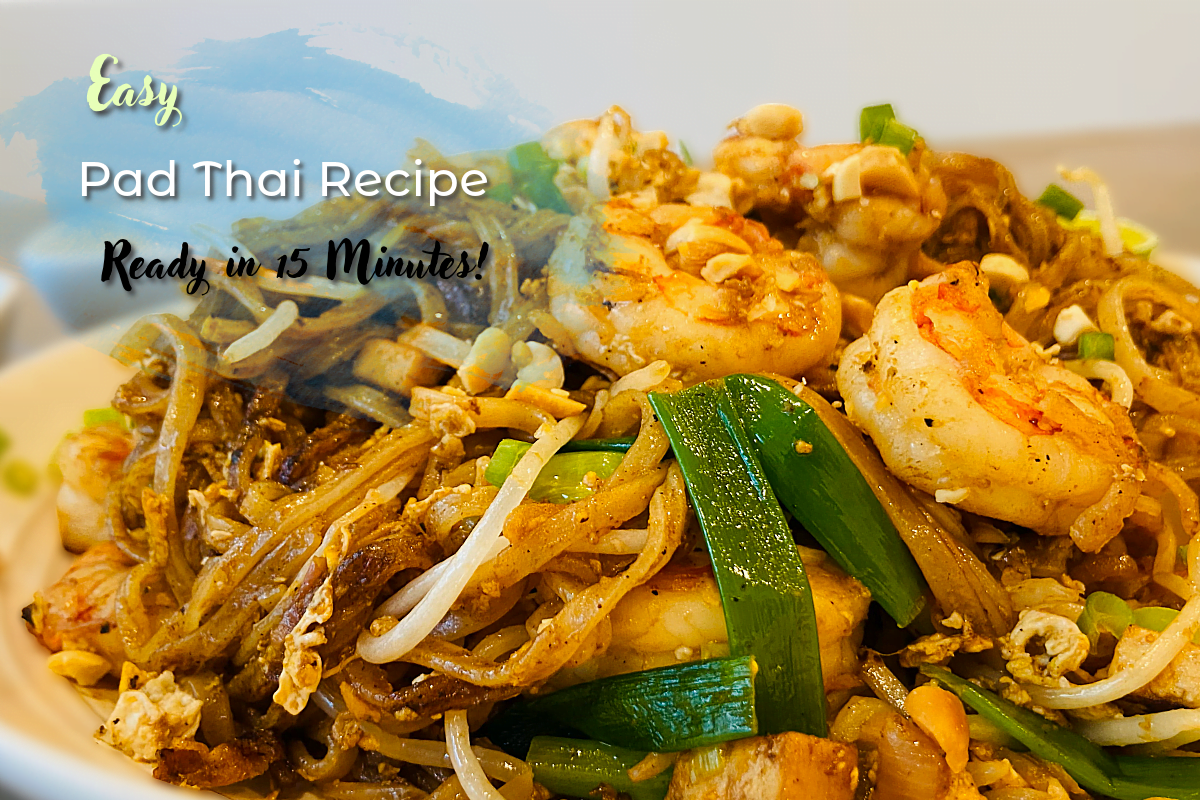
This Pad Thai recipe is perfect for you if you’re looking for a quick and delicious dinner option. Using ingredients you can find at most grocery stores, you can whip up this tasty dish in just 15 minutes. Its bold flavors and simple preparation make it a great choice for busy weeknights or whenever you want a taste of Thai cuisine without much effort.
The History of Pad Thai
Pad Thai is one of the most beloved dishes to come out of Thailand, known for its perfect balance of sweet, sour, salty, and umami flavors. But how did this iconic dish come to be?
Origins and National Identity
The origins of Pad Thai lie in the rich cultural heritage and historical development of Thailand. Its nationalist advocate, Prime Minister Plaek Phibunsongkhram, helped bring it to widespread attention in the 1930s and 1940s. In an effort to cut back on rice consumption during the recession, the government promoted rice noodles.
The Creation of Pad Thai
“Pad Thai” was promoted by the Thai government as a way to celebrate the country’s heritage. Quickly becoming a standard offered by street sellers, the dish was easy to create and had all the right ingredients.
Influences and Evolution
Pad Thai is a great example of how Thai food has evolved to include elements from many different cultures while still maintaining its own identity. Tamarind paste, fish sauce, and noodles with a Chinese heritage are some of the characteristic Thai components. It has changed with time to incorporate different types of veggies and meats.
Global Popularity
Pad Thai’s adaptability and well-balanced flavors have made it a global favorite. It has come to signify the culinary creativity and long history of Thailand and has become an icon of Thai culture and cuisine.
Additional Serving Suggestions for Pad Thai:
- Side Dishes: Pair your Pad Thai with a light and refreshing cucumber salad or some fresh spring rolls to complement the flavors.
- Drinks: A cold Thai iced tea or a light beer would go perfectly with this dish.
- Dessert: Finish your meal with a traditional Thai dessert like mango sticky rice or coconut milk ice cream.
Ingredient Substitutions:
- Tamarind Paste: If you can’t find tamarind paste, you can substitute it with rice vinegar and a little bit of lime juice for the tangy flavor.
- Fish Sauce: Soy sauce or a combination of soy sauce and a bit of Worcestershire sauce can be used as a substitute for fish sauce.
- Rice Noodles: If rice noodles are not available, you can use flat pasta like fettuccine or linguine as an alternative.
Conclusion:
For a great and fast supper, try this Pad Thai recipe. This dish is sure to become a family favorite because to the mouth-watering shrimp, tofu, and tangy tamarind sauce. Pad Thai is ready in less half an hour when made at home.
Pad Thai in 15 Minutes
Equipment
- 1 large skillet
Ingredients
For the Pad Thai Sauce:
- 2 tablespoons tamarind paste
- 2 tablespoons fish sauce
- 1 teaspoon brown sugar use 1 tablespoon if you prefer a sweeter taste
- 1 teaspoon smoked paprika
- 3 tablespoons water
For Stir-Frying:
- 8 oz. shrimp peeled and deveined
- 4 cloves garlic minced
- 1 shallot thinly sliced
- 100 grams 3.5 ounces extra-firm tofu, cubed
- 1 chili pepper sliced
- 8 oz. soaked rice noodles
- 2 large eggs
- 1 cup mung bean sprouts
- 3 green onions chopped into 2-inch lengths
- For Garnish:
- Additional green onions sliced
- 1 teaspoon lime juice
- 1 tablespoon roasted peanuts chopped
Instructions
- Preparation: Gather all the ingredients.
- Prepare the Rice Noodles: Soak dried rice noodles in cold water for 45-60 minutes, or follow the instructions on the package of the rice noodles you purchased.
- Prepare the Sauce: In a small bowl, combine the tamarind paste, fish sauce, brown sugar, smoked paprika, and water. Mix well and set aside.
- Cook the Shrimp: Add oil and heat a large pan or wok over medium-high heat. Make sure the oil and wok are hot enough before adding the shrimp. Stir-fry the shrimp until they are pink and cooked through, about 2-3 minutes. Remove the shrimp from the wok and set aside.
- Stir-Fry the Aromatics: In the same wok, add the minced garlic, sliced shallot, cubed extra-firm tofu, and chili peppers. Stir-fry until fragrant and the tofu is lightly browned, about 2-3 minutes.
- Add the Noodles and Sauce: Add the soaked rice noodles to the pan along with the prepared Pad Thai sauce. Toss to coat the noodles evenly.
- Add the Sautéed Shrimp: Add the sautéed shrimp to the wok, and continue to toss to coat everything evenly.
- Cook the Eggs: Push the noodles to one side of the pan and crack the eggs into the empty space. Scramble the eggs until they are mostly cooked, then mix them into the noodles.
- Combine and Heat Through: Add the mung bean sprouts and chopped green onions to the wok. Toss everything together and cook for another 2 minutes until everything is heated through.
- Garnish and Serve: Transfer the Pad Thai to serving plates. Garnish with additional sliced green onions, a squeeze of lime juice, and chopped roasted peanuts. Serve hot.
Video
Notes
- Vegetarian Option: If you prefer a vegetarian version, simply omit the shrimp and double the amount of tofu. You can also add extra vegetables like bell peppers, carrots, or broccoli for added nutrition and flavor.
- Boost the Flavor: For an extra burst of flavor, add a splash of soy sauce or a sprinkle of red pepper flakes to the sauce. You can also incorporate a bit of garlic chili paste for a spicy kick.
- Customize Sweetness and Spice: Adjust the level of sweetness and spiciness to your preference by varying the amount of brown sugar and chili pepper. If you like it sweeter, add a bit more sugar. For a spicier dish, increase the amount of chili pepper or add a dash of hot sauce.



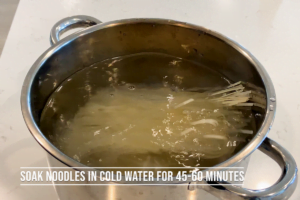


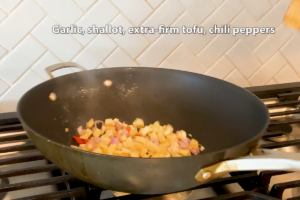
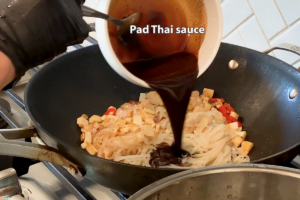
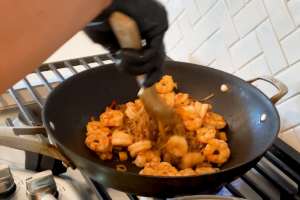
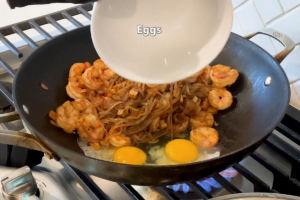
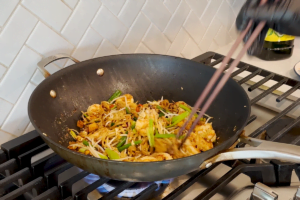
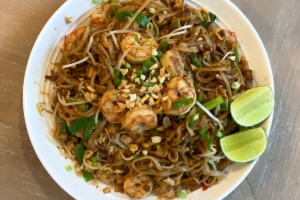
1 thought on “Pad Thai in 15 Minutes”